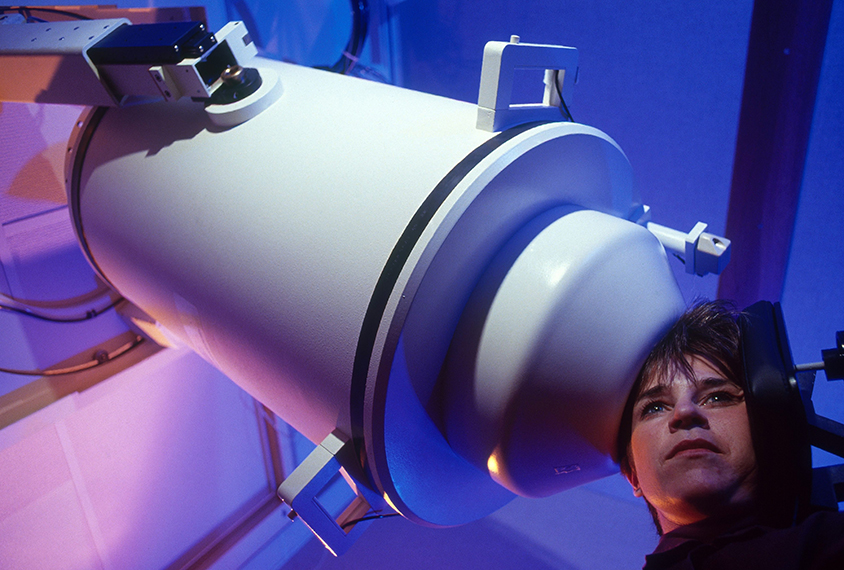
Hank Morgan / Science Source
Powerful duo of techniques charts signals’ path through brain
Combining a brain imaging technique with a neuron stimulation method can reveal how activity at one site travels through neural networks in the brain.
Combining a brain imaging technique with a neuron stimulation method can reveal how activity at one site travels through neural networks in the brain, researchers reported today at the 2017 Society for Neuroscience annual meeting in Washington D.C.
The method, dubbed OptoMEG, brings together two different techniques: magnetoencephalography (MEG), which picks up the tiny magnetic fields produced by neuronal activity; and optogenetics, in which neurons are genetically engineered to respond to light.
Optogenetics can stimulate a limited number of neurons locally. The new work suggests that combining it with another method like MEG will enable researchers to track how the local activity propagates through interconnected brain regions. The approach may also be useful for studying conditions such as autism and epilepsy.
“We show that we can activate functional networks and anatomically connected networks; that opens up huge possibilities,” says Emily Rogers, a graduate student in Dwayne Godwin’s lab at Wake Forest University in Winston-Salem, North Carolina, who presented the findings.
The combination could be used to address a major concern about using MEG to record activity from deep brain regions. The convoluted structure of the cortex may distort neural signals generated in deep regions, and so identifying the source of deep brain activity can be challenging.
The researchers showed that in experiments with monkeys, their MEG readings accurately pointed to the sites they had stimulated with light. Researchers can similarly use the combination to confirm that MEG readings of various brain regions are precise. This information can help them to confidently interpret MEG scans in people.
“We know exactly what we are stimulating with optogenetics — where and with what frequency. If we know these things, we can compare them to how MEG interprets those known things,” Rogers says.
Light and magnets:
The researchers injected a virus carrying light-sensitive proteins into a deep region of the hippocampus and into a more superficial area in the prefrontal cortex, in three anesthetized vervet monkeys.
They then stimulated the neurons by shining flashes of light on them for 10 milliseconds through a narrow optical fiber, while simultaneously taking MEG scans.
The MEG scans picked up the light-induced neuronal response at the precise times, in both shallow and deep regions.
The team then looked at the data recorded after the light flash to see how the signal evolves over time. They could see from the MEG scans that the peak of the signal travels from the site of stimulation in the prefrontal cortex all the way to the motor cortex, making stops at several regions. These stops are known to make up a functional and anatomically connected loop.
The team is developing the same method for awake monkeys, which is more challenging, Rogers says. “This was a very quiet brain and a very clear signal. Now we have to pick out the signal from a very loud brain.”
For more reports from the 2017 Society for Neuroscience annual meeting, please click here.
Recommended reading

Expediting clinical trials for profound autism: Q&A with Matthew State

Too much or too little brain synchrony may underlie autism subtypes
Explore more from The Transmitter

Mitochondrial ‘landscape’ shifts across human brain

